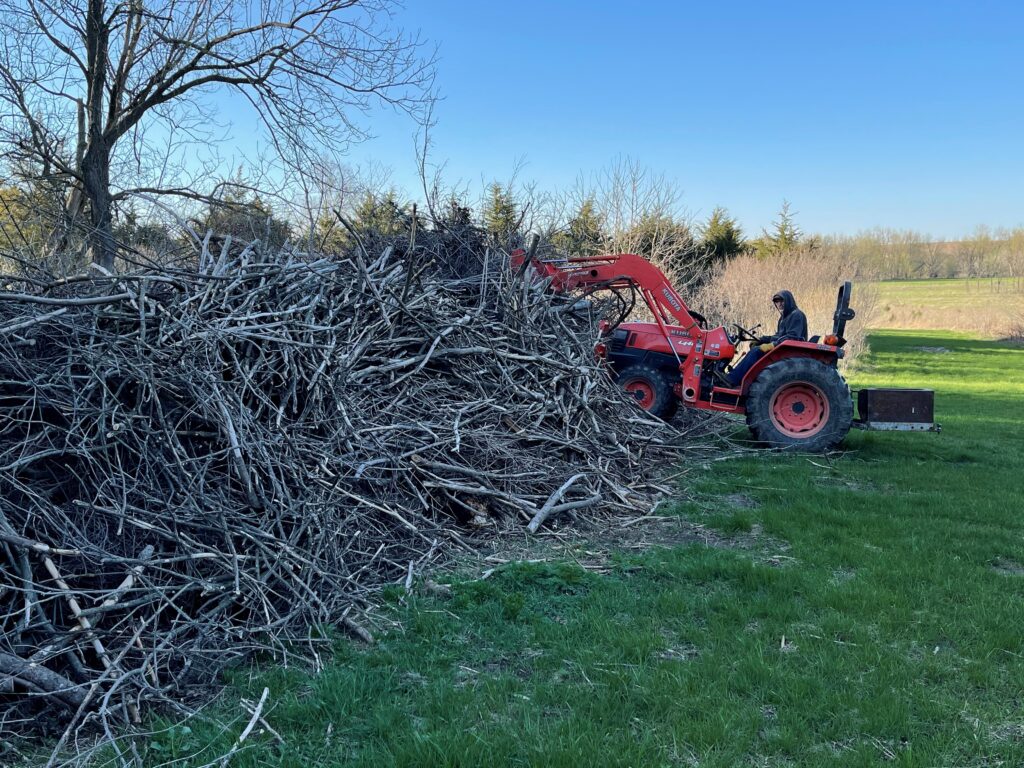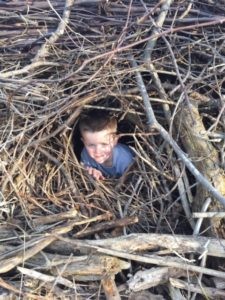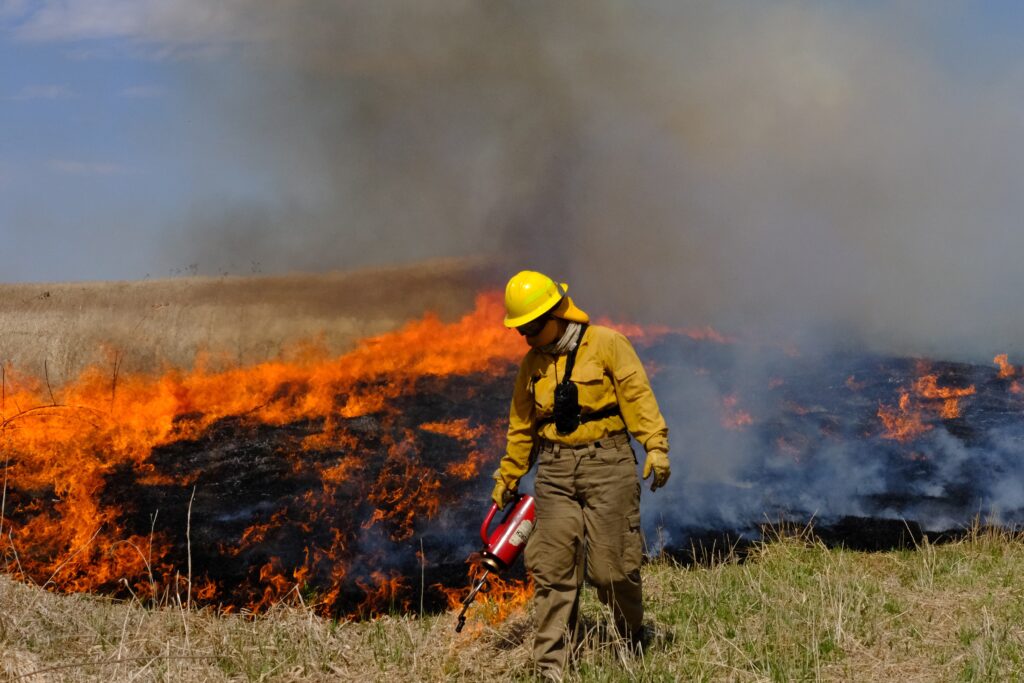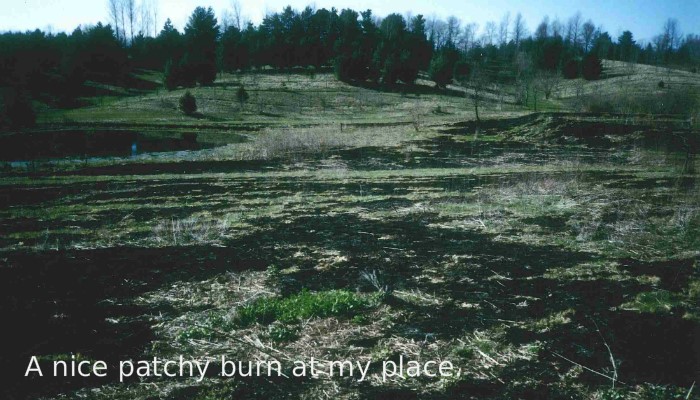Fire Management and Safety
Sadly, local newspapers reported on Easter Sunday that a woman tending a ditch fire near Marion died when she was engulfed by flames. So today, let’s review a few aspects of fire management and safety in the context of management of small natural areas.
My first question is whether a burn is the best option. Cut brush can be viewed as a resource and when packed into an eroding gully and properly staked to anchor it, it can slow the water. Brush piles also become habitat for a variety of creatures. Our community has maintained one on the edge of our woodlot for nearly a half-century. The center is now mostly compost and it is tall enough that we use a tractor bucket to stack new brush on top and help prevent excessive sprawl.

Stacking brush with a tractor.
This brush pile has been home to many generations of rabbits, and in winter, the snow around it is a carpet of bunny tracks. When you walk toward it, a hawk usually flies up from an overhanging tree, having been doing its Darwinian best to improve the awareness of the resident population. The composted center of the pile is easy digging for many native species.
For managing prairie, fire can be one of the best tools available, but can also be overdone. A complete annual burn will eliminate the native insects, and these natives are already in trouble in Iowa due to massive use of insecticides on crops, which drifts onto native parcels. In most cases, it is better to burn prairie on some sort of rotation where each portion only burns every 3-5 years and use the weather to make them incomplete burns.
This deliberately patchy and incomplete burn will preserve enough overwintering insects to repopulate the burned prairie within a year or two.
The clothing you choose to wear is an important part of your safety during a field burn. Heavy cotton with dense weave, such as canvas or denim, will start charring first which gives you some warning before it catches fire. By contrast, polypropylene, polyethylene, rayon and nylon are petroleum products that can melt directly onto your skin, which is bad news. Worse news is that melted petroleum products catch on fire readily.
Hair also ignites quite readily, and completely covering and enclosing yours with a hooded sweatshirt greatly reduces the likelihood of a bad hair day. A cap with a brim worn low helps keep drifting ash and the occasional glowing ember out of your eyes. Leather boots and gloves are durable, not very flammable and can help protect you in close encounters.
The preceding should be considered the minimum for occasional small burns. If you are, or plan to be, involved with regular burning or on a larger scale, you should scale up to professional-grade protective clothing. The product called Nomex is available in the form of pants, jackets, and hats designed for more complete protection from fire, usually in a garish yellow color for better visibility in smoky and twilight conditions. Face shields and other gear can accompany it for wraparound protection.

A member of the Bur Oak Land Trust stewardship crew uses a drip torch during a prescribed burn/Bur Oak Land Trust
So just like our other management tools, such as chainsaws and trucks, fire is dangerously useful and needs to be used with planning and precautions.



